#Dinosaurs Extinction
Explore tagged Tumblr posts
Text
youtube
One of the saddest and most beautiful videos I have seen in 2024 ❤️💔
This guy's videos are amazing
https://youtube.com/@deadsound?si=uE_ld6bR2ucDbfSc
#dinosaurs#dinosaurs video#the last tyrant#dinosaurs youtube#dinosauria animated series#David James Armsby#dinosaurs animation#dinosaurs extinction#dinosaurs short film#Youtube#dead sound
2 notes
·
View notes
Text
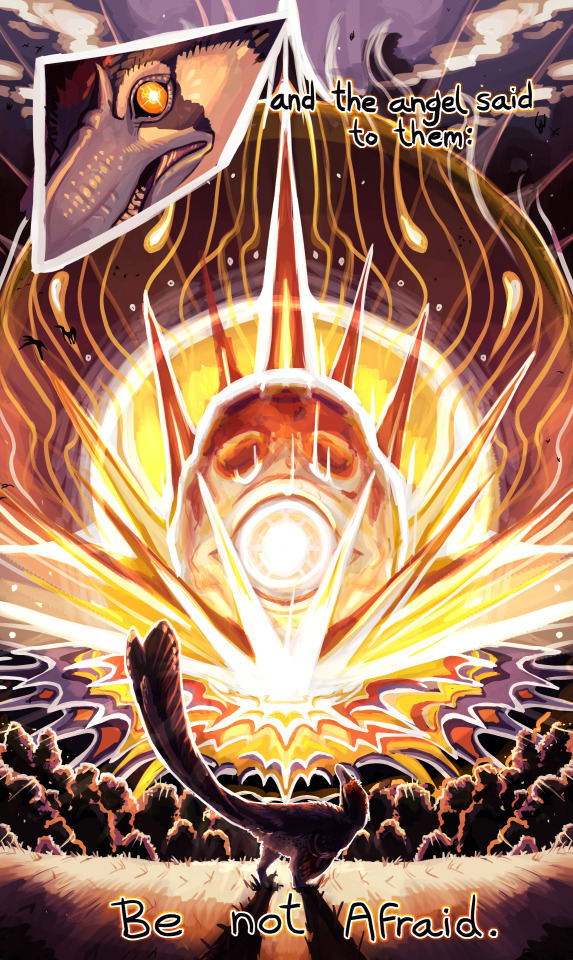
a visitor
#fraizer draws#paleoart#paleontology#deinonychus#dinosaurs#kpg extinction event#art#Sorry. meteors is angels to me
23K notes
·
View notes
Text
Many boys desire a big dinosaur GF, but others have even bigger ambitions!


Let there be more dino women!
#feathered dinosaurs#dinosaur#feathers#extinct species#dromaeosaur#raptor#female#cute#art#prehistoric species#anthro#anthropomorphic#tf#transformation#tf art
2K notes
·
View notes
Text
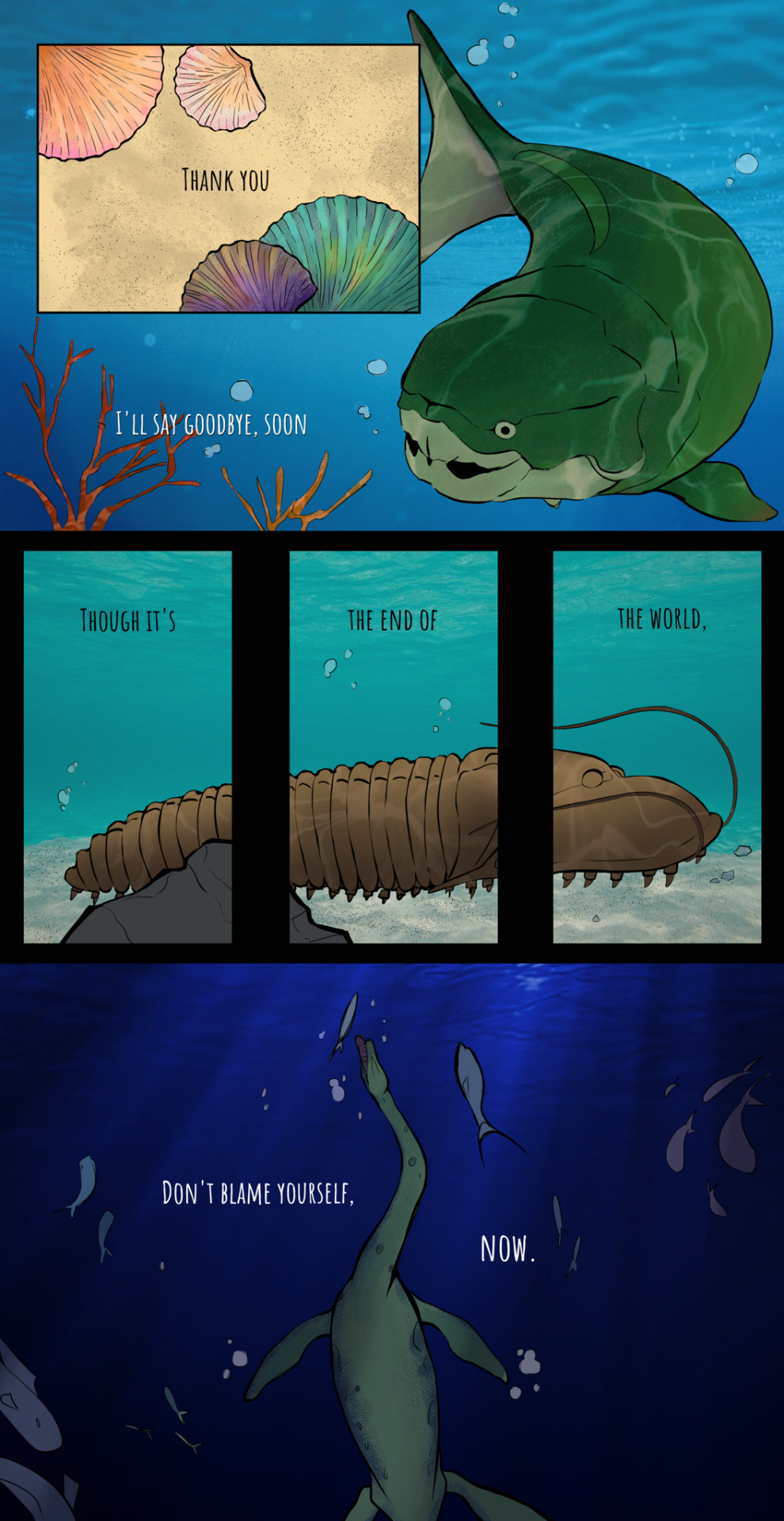
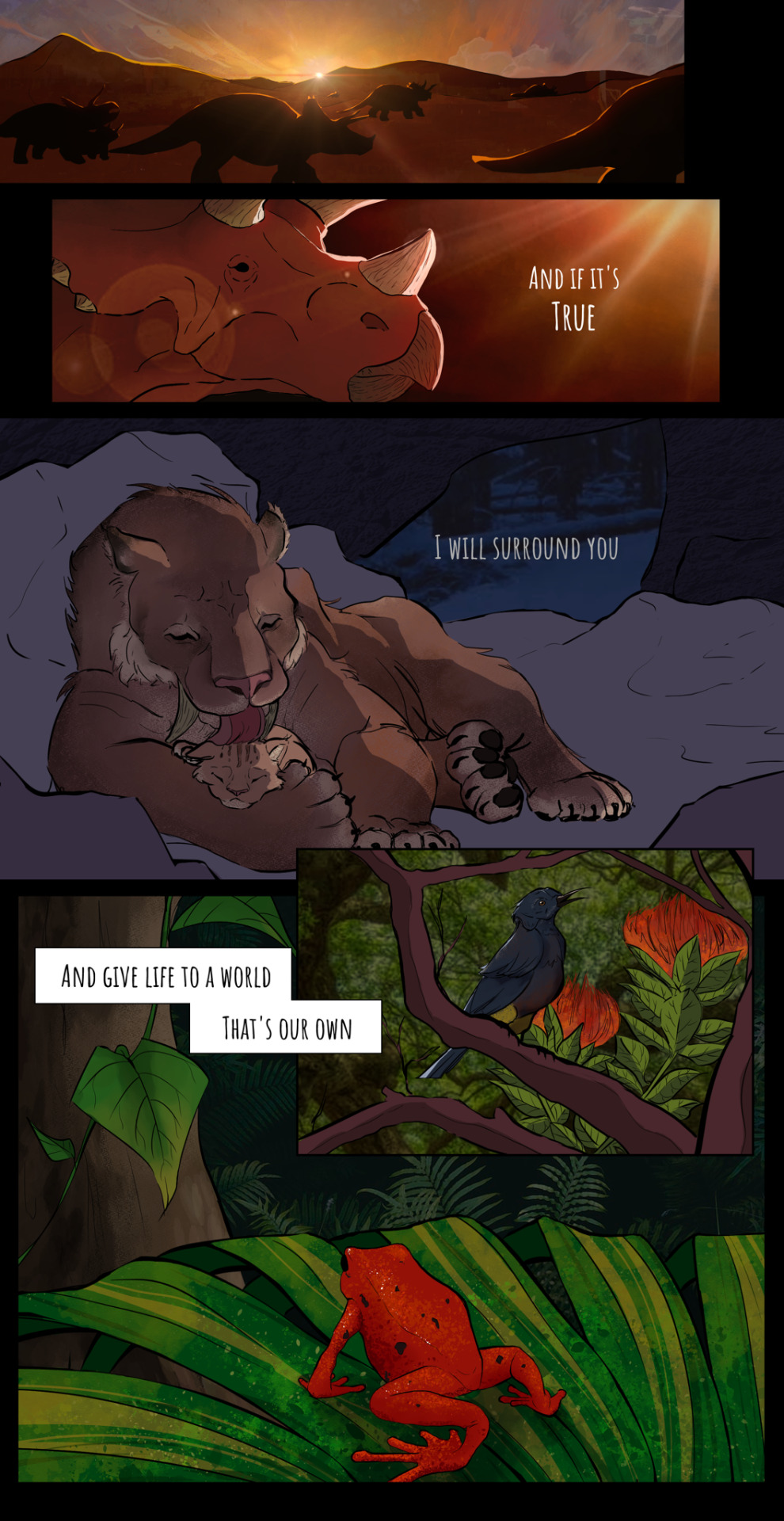
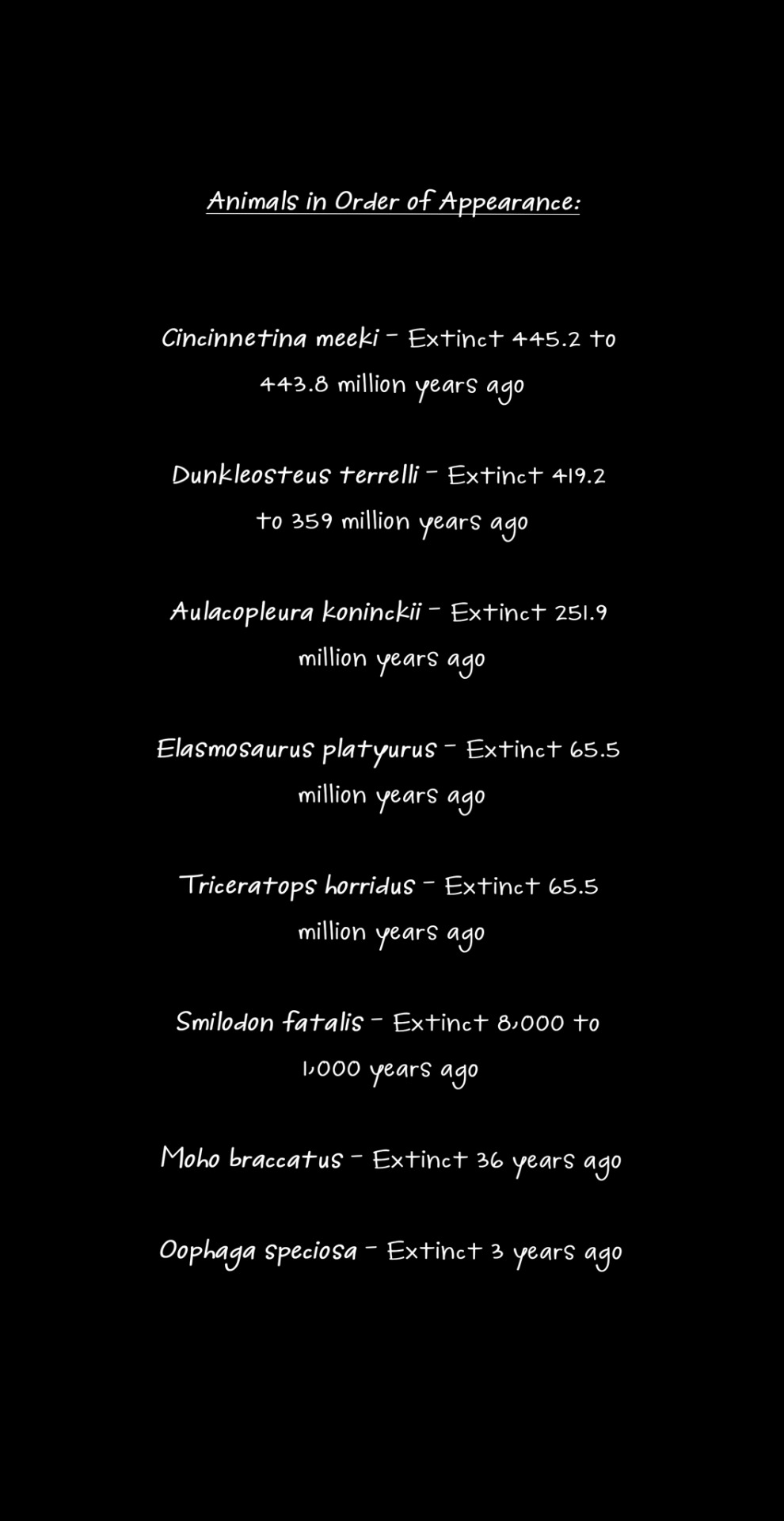
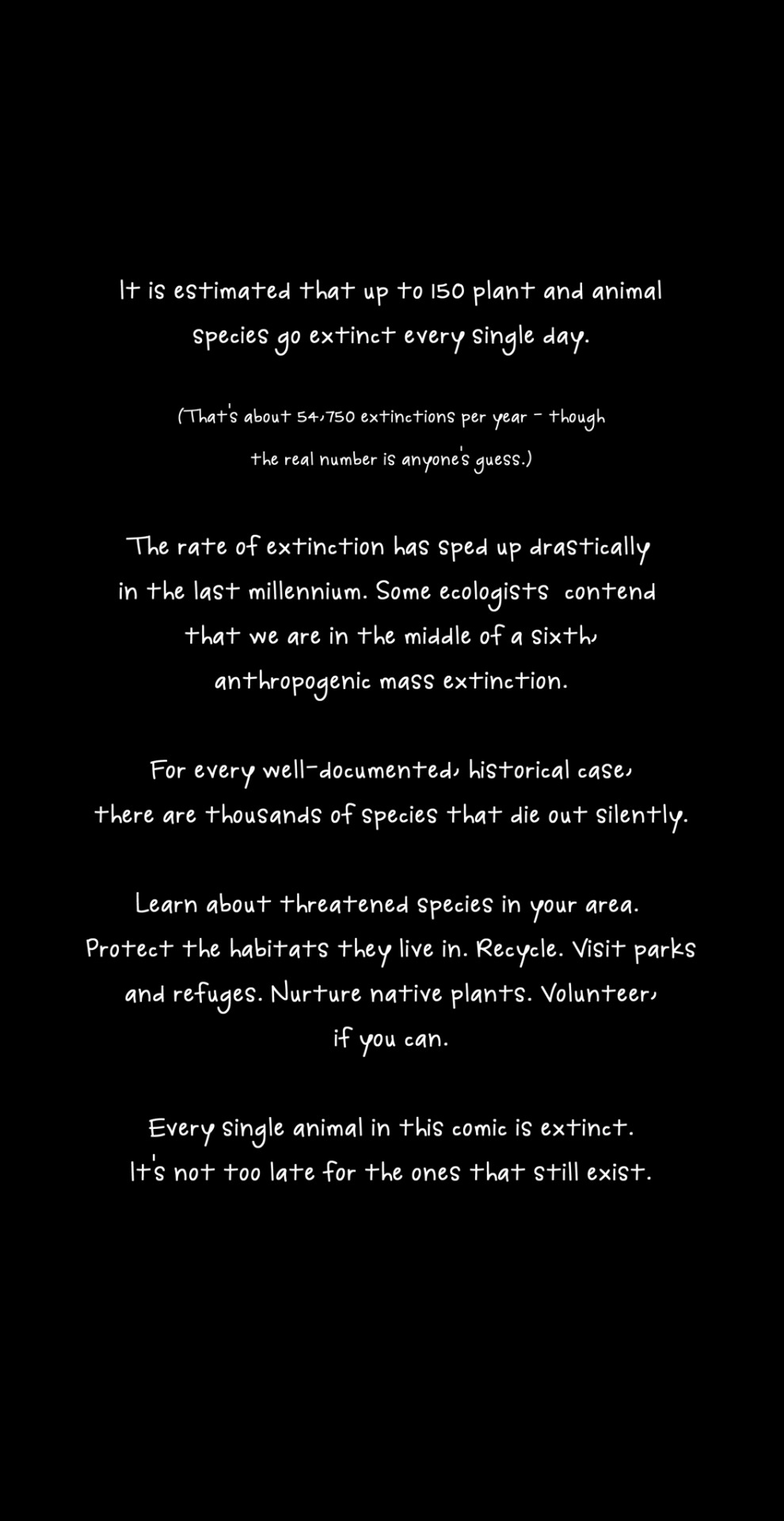
text from porter robinson's "goodbye to a world"
every single animal in this comic is extinct. it's not too late for the ones that are left.
edit: thanks @mudcrabmassacre for the correction, smilodon fatalis did not in fact go extinct in 1023 AD. the actual prediction is around 10,000 years ago - I think i may have missed a zero or two.
#comic#art#environment#conservation#animals#extinct species#fossils#climate change#dinosaurs#ancient life#endangered species#endangered animals#comics#artists on tumblr#digital art#digital comic#my-art
11K notes
·
View notes
Text

Friday evening means dance off for this couple of Qianlong shouhu during the Early Jurassic in China 💃🏼🪩🕺🏽🦕🦖
#dinosaur#illustration#paleoart#paleontology#paleoillustration#paleoblr#palaeoblr#art#palaeontology#jurassic world#jurassic period#dinosaur art#dinosauria#dinosaurs#fossilfriday#sauropodomorph#saurischian#paleoartist#palaeoart#earth history#china#extinct animals
1K notes
·
View notes
Text
so the Spouse and I like to have a lot of verbal discussions about the universe where the asteroid didn't hit. mainly spec evo stuff. what would evolve into what, that kind of thing. we know we're not alone in that.
we maintain that humans evolved alongside some pretty terrifying mammalian megafauna, so why not dinosaurian? so what would a realistic sapient ape in a dinosaur world be?
it's taken some thinking, but:
wookies.
we'd be wookies.
no need to leave the trees, the grass would be very unsafe if it evolved the same
no need to leave the trees, we remain furry
we could build tree houses and other structures, in the trees, to stay out of the range of predators
that's. just wookies. that's just the wookies.
6K notes
·
View notes
Photo
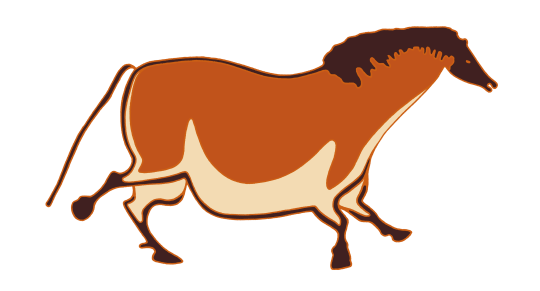

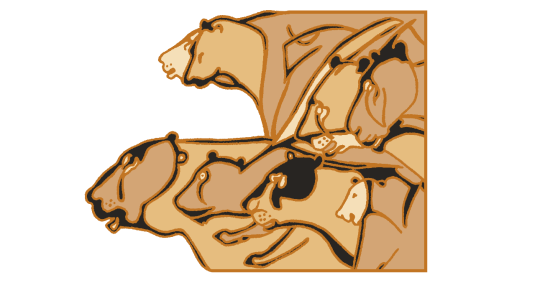

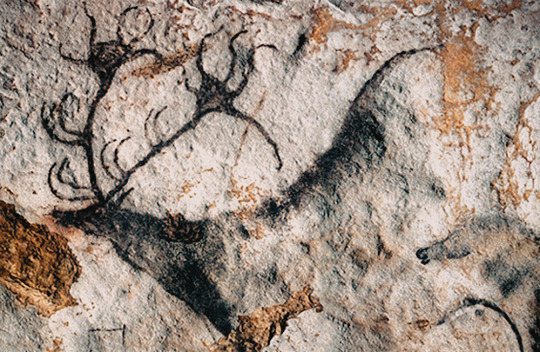

the Lascaux cave art pins are now live at greerstothers.shop
I’ve loved these for ages, because of how they show the colourations of extinct animals! that’s something that is so hard to preserve through fossils, but now we know that prehistoric horses had Przewalski-esque coats, that giant elk had these dark shoulder humps, and that cave lions were tawny with dorsal stripes
#the book I did (kaleidoscope of dinosaurs) is all about the colourations of extinct animals#and there's a 2-page spread about French cave paintings
5K notes
·
View notes
Text
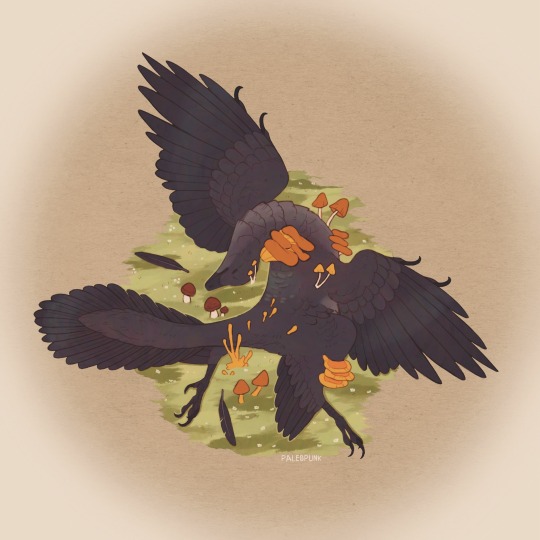
Though its the end of the world, don't blame yourself
And if its true
I will surround you and give life to a world
That's our own
1K notes
·
View notes
Text
Lokiceratops rangiformis Loewen et al., 2024 (new genus and species)
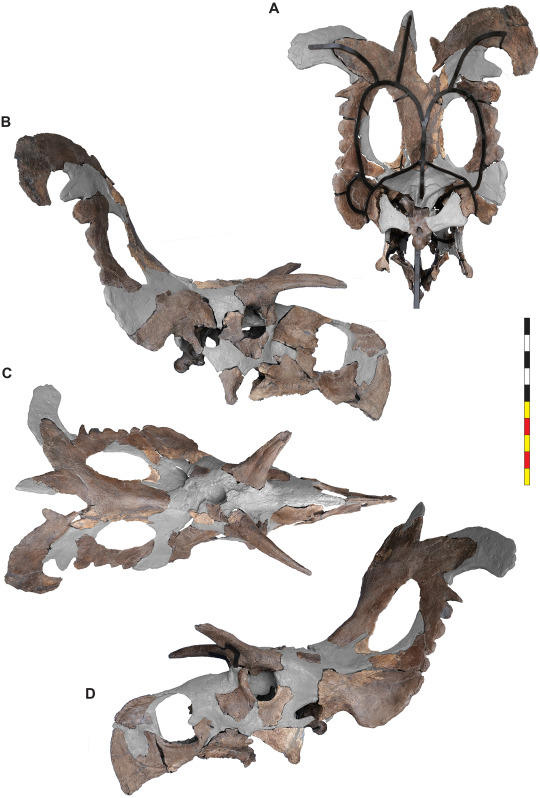
(Reconstructed skull of Lokiceratops rangiformis [scale bar = 1 m], with unpreserved portions in gray, from Loewen et al., 2024)
Meaning of name: Lokiceratops = [Norse deity] Loki's horned face [in Greek]; rangiformis = Rangifer [genus of the extant reindeer]-shaped [in Latin]
Age: Late Cretaceous (Campanian), roughly 78.1 million years ago
Where found: Judith River Formation, Montana, U.S.A.
How much is known: Partial skeleton of one individual, including a partial skull, several vertebrae, and some limb bones.
Notes: Lokiceratops was a centrosaurine cereratopsian, making it a horned dinosaur more closely related to Styracosaurus and Pachyrhinosaurus than to Triceratops. It is one of the largest known centrosaurines, with its skull alone being nearly 2 m long.
The skull of Lokiceratops was highly distinctive. A pair of very large, curved horns at the back of its frill pointed out to the sides. Furthermore, a pair of smaller horns closer to the center of the frill was asymmetrical, with one horn being larger than the other. Asymmetrical head ornamentation is also seen in the antlers of reindeer, hence the species name "rangiformis".
Lokiceratops is known from approximately the same time and location as three other centrosaurines, Albertaceratops, Medusaceratops, and Wendiceratops. Despite their diversity, all centrosaurines discovered so far are only known from very narrow ranges in both time and space. This may suggest that these horned dinosaurs diversified rapidly into numerous forms differentiated primarily by display features such as the shape of their horns and frills, with each species lasting only a short time in a small geographic region before evolving into new species or going extinct.
Reference: Loewen, M.A., J.J.W. Sertich, S. Sampson, J.K. O’Connor, S. Carpenter, B. Sisson, A. Øhlenschlæger, A.A. Farke, P.J. Makovicky, N. Longrich, and D.C. Evans. 2024. Lokiceratops rangiformis gen. et sp. nov. (Ceratopsidae: Centrosaurinae) from the Campanian Judith River Formation of Montana reveals rapid regional radiations and extreme endemism within centrosaurine dinosaurs. PeerJ 12: e17224. doi: 10.7717/peerj.17224
420 notes
·
View notes
Text
#Paleostream 10/12/2024
here's today's #Paleostream flocking sketches!!! today we drew Anhanguera, Sordes, Avisaurus, and Mawsonia
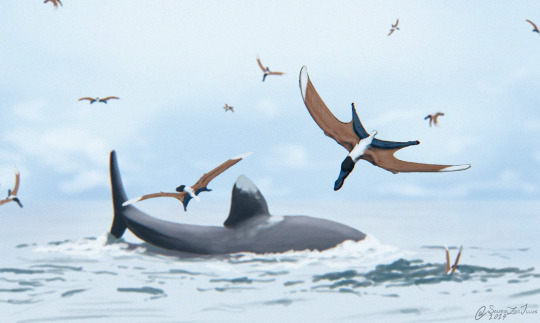
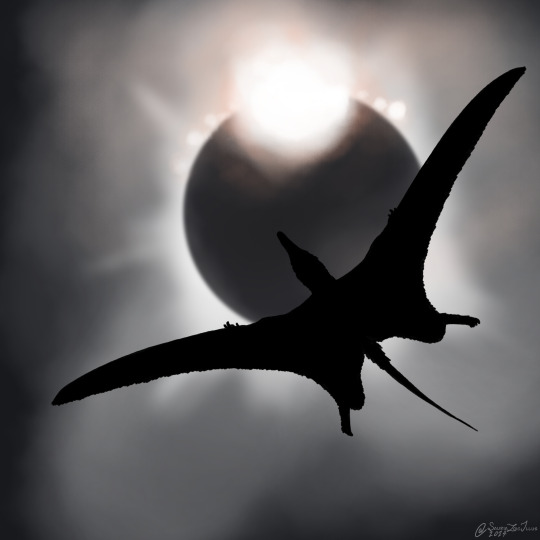
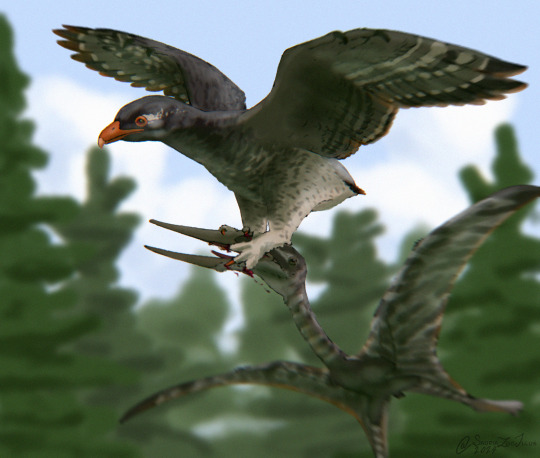

#Paleostream#paleoart#digital art#paleontology#digital artwork#artists on tumblr#palaeoart#digital illustration#sciart#id in alt text#sketch#sketches#pterosaur#Anhanguera#ichthyosaur#marine reptile#Platypterygius#Sordes#eclipse art#eclipse#solar eclipse#dinosaur#bird#extinct birds#enantiornithes#Avisaurus#azhdarchid#lobe finned fish#Mawsonia#plesiosauria
339 notes
·
View notes
Text
Many people, maybe most people, now know, intellectually, that birds are dinosaurs.
But I don't think most people really feel it. Have really internalized it. Even I haven't, completely. The idea of dinosaurs as big extinct lizards is too deeply-ingrained.
But birds are dinosaurs. Not related to dinosaurs. Not descended from dinosaurs. Scientifically speaking, they. are. dinosaurs.
There are between 9,000 and 11, 000+ known species of dinosaurs alive today.
There are over 50 billion individual dinosaurs alive on Earth today.
You can go into a pet store and buy a dinosaur.
You can see dinosaurs at the zoo, or on a farm, or in your backyard.
People grow dinosaurs on farms.
We eat dinosaurs stuffed with potatoes and gravy and pie for Thanksgiving and Christmas.
We eat them battered and fried for a snack.
There are dinosaurs ("fire starter" birds) that use fire as a tool by spreading burning twigs.
Dinosaurs have been in space.
You can go to a local park and see dinosaurs swimming in the creek with their hatchlings.
You can go to the beach and see them scavenging by the seaside.
Some people might think that this makes dinosaurs more boring and mundane.
Of course, it doesn't change the nature of things at all, beyond how we perceive them- but so far as how we perceive them is concerned, I think it makes birds, and the world, more amazing.
I've probably posted about this before, but there was a moment last summer, when I was on vacation, and I went walking on the beach to a spot where I knew eagles often nested, hoping to get some photos. And I did. There was a big bald eagle, sitting way up in a tall evergreen tree, looking down at the beach. And below it, on the beach, there were groups of crows and geese foraging in the shallow pools and seaweed and shells on the beach, at the foot of the trees. And it hit me that it felt just like a scene out of one of my old childhood dinosaur books. Maybe a herd of Iguanodon, foraging on an ancient beach, as a predator watched them from the forest, preparing to strike (there's a site much like that, Dinosaur Ridge in Colorado, not far from the town where I lived as a child, where dinosaur tracks are preserved in stone, covering a hillside, showing the actual movements of actual animals that lived tens of millions of years ago).
And it gave me hope. Because after 150 million years, they're still here. Changed, certainly (they wouldn't have survived otherwise), but still here, despite mass extinctions, climate change, asteroid impacts, and even the continents moving and changing shape.
And if they survived, maybe we will too.
It also gives me more appreciation for the horror of environmental destruction and extinction. Humans have wiped out species of birds.
We could be the thing that finally makes the dinosaurs go extinct.
#Science#Natural History#Evolution#Palaeontology#Environment#Mass Extinction#Birds#Dinosaurs#Birds Are Dinosaurs
352 notes
·
View notes
Text

The Mists of Lourinhã Eousdryosaurus encounters Lusotitan.
#my art#paleoart#sciart#dinosaur#lusotitan#eousdryosaurus#sauropod#ornithopod#herbivore#lourinha formation#portugal#jurassic#mesozoic#extinct#animal#nature#prehistoric
290 notes
·
View notes
Text

[ The skull is mounted on a custom steel armature, which allows for it to be seen all the way around. ]
"After seven years of work, the best preserved and most complete triceratops skull coming from Canada — also known as the "Calli" specimen — is on display for the first time since being found in 2014 at the Royal Tyrrell Museum in Drumheller, Alta. A museum news release calls the specimen "unique" because of where it was discovered, the age of the rock around it, and how well it was preserved. Following the floods that tore through Alberta about 10 years ago, the Royal Tyrrell staff were engaged in flood mitigation paleontology work when the triceratops skull was discovered in 2014. Triceratops fossils are rare in Canada. This skull was found in the foothills of southwestern Alberta — an area where dinosaur fossils in general are uncommon — and nicknamed "Calli" after Callum Creek, the stream where it was discovered. Transported via helicopter in giant, heavy chunks, the skull and most of the jaw pieces were extracted over the course of a month in 2015. The rest of the triceratops' skeleton was not found. Roaming the earth roughly 68 to 69 million years ago, the museum says this skull was buried in stages, evident by the fossilization process. "Paleontologists know this because the specimen was found in different rock layers, and the poorly preserved horn tips suggest they were exposed to additional weathering and erosion," reads a museum blog about the triceratops skull. "The rest of the skeleton likely washed away," noting that the lower jaws were found downstream. From 2016 to 2023, Royal Tyrrell technician Ian Macdonald spent over 6,500 hours preparing this fossil, removing over 815 kilograms of rock that encased the skull. This triceratops skull is the largest skull ever prepared at the museum and its third largest on display."
Read more: "Canada's biggest and best triceratops skull on display in Alberta" by Lily Dupuis.
#palaeoblr#Palaeontology#Paleontology#Dinosaur#Triceratops#Fossil#Cretaceous#Mesozoic#Ceratopsian#Extinct#Prehistoric#Photo#Article#Information#Museum#Royal Tyrrell Museum
2K notes
·
View notes
Text

my son microwave who has every disease
#microraptor#raptor#avialan#bird#dinosaur#birds are dinosaurs#theropod#toy photography#paleoart#paleo art#dinosaur toy#dinosaur toy photography#animal figure#cretaceous#feathered dinosaur#miniature photography#dinosaur photography#extinct#collecta#miniature animal
286 notes
·
View notes
Text
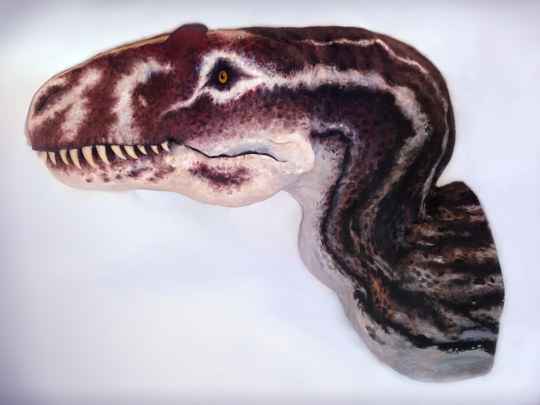
Funeral for a friend: decay, extinction, and saying goodbye
This paper-mache 1:1 scale allosaurus bust holds a special place in my heart, he’s one of the first sculptures I ever made. Apologies for the level of scientific accuracy here—it was 2013, I was young and naive.
The planets have aligned in an unfortunate way, and it’s time for me to send him off to the great beyond. I’ve fretted for a long time about how to do this.
I decided to let him slip away in a slow decay, rather than a blaze of glory. I’ll be documenting my buddy here slowly melt back into the earth. He’s made of paper, cardboard, and flour paste; I’ll gather up his polymer clay teeth as they shake loose during his final rest in my parents’ backyard. Big thank you to my folks for allowing me to do this weird thing.
For as long as it takes I’ll document the process of my allosaurus friend disappearing. I’ve been thinking a lot about loss and goodbyes in the past few years. Decay too. The permanence of it all makes my stomach twist, even for a silly dinosaur sculpture. Once it’s gone it can’t come back
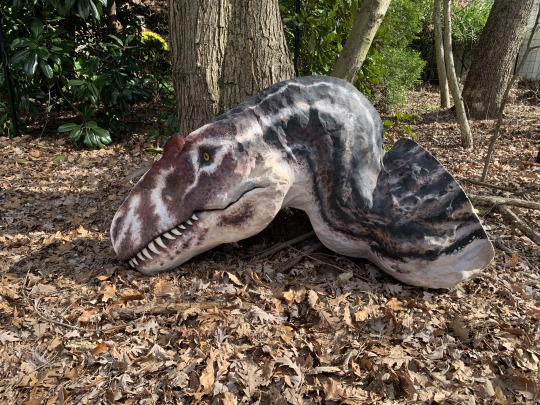
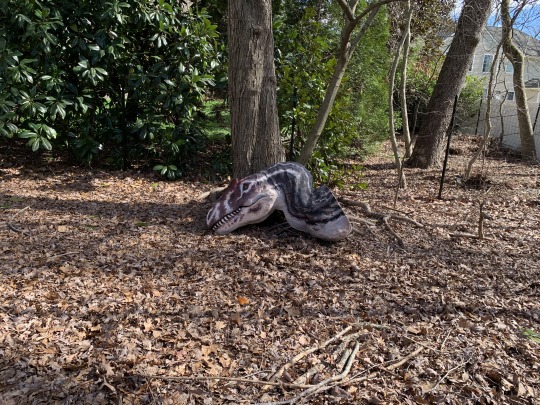
#my art#sculpture#paper mache#dinosaur#paleoart#extinction#science art#made this piece at such a particular time in my life#and it was such a time crunch and intense process to make#have a lot of feelings
451 notes
·
View notes